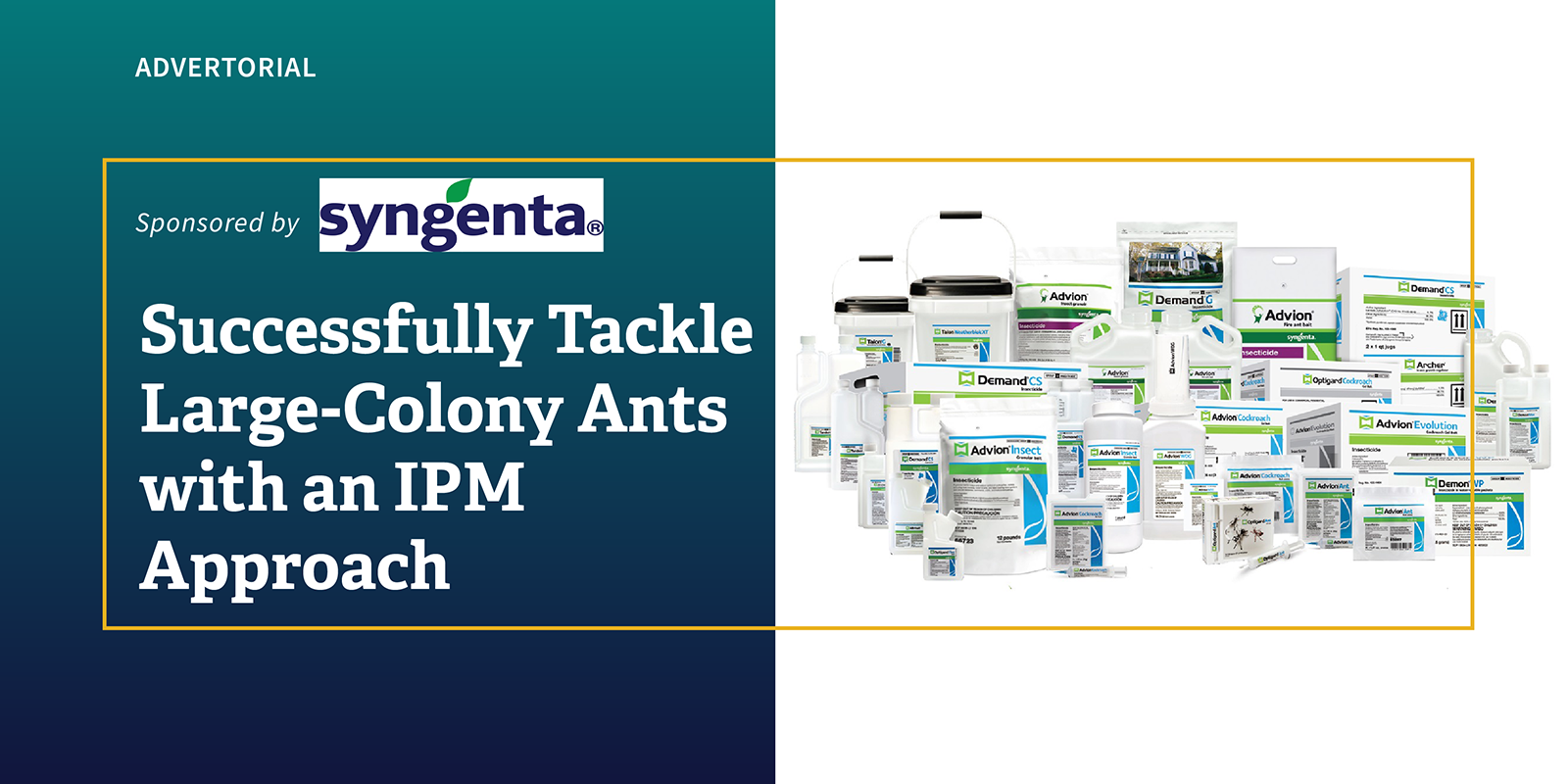
By Dr. Chris Keefer, technical services manager, Professional Pest Management, Syngenta
Ants are the top pests in many urban areas across the U.S. In many cases, these ants are large-colony pests such as Argentine ants, tawny crazy ants or odorous house ants. Successfully controlling these large-colony ants in urban environments requires an integrated pest management (IPM) plan that includes inspection, understanding the species and using multiple formulations and active ingredients.
Inspect and identify conducive conditions
- Ants need food, water and harborage
- Removing or significantly reducing one of these needs, combined with precise, targeted insecticide applications, can increase the likelihood of successfully controlling the colony
Know the target pest
- Properly identifying the ant species will help you deliver the appropriate treatment to significantly reduce the population
- For instance, the dietary preferences of many ant species change depending on the time of year, so it’s important to apply the appropriate bait based on the target pest’s current diet
- Being able to identify the top ant species within your region will help speed the treatment process, as well as give you and your customers confidence and peace of mind
Build a ring of protection
Successful large-colony ant control may require using multiple formulations and active ingredients to target ants in different places around a structure. This approach builds a ring of protection, creating a large buffer zone to prevent ants from entering a structure.
- For fast ant control and to keep them out of an area, demand the best and kill the callback with Demand® CS insecticide, which can provide a quick knockdown and residual control
- To avoid disrupting ant foraging and to keep ants moving across a treated substrate, use a non-repellent product like Advion® WDG insecticide
- If honeydew producers (HDPs) are present on the vegetation around a structure, use a dual-active ingredient product like Tandem® insecticide, which contains thiamethoxam and lambda-cyhalothrin
- When applied to vegetation, thiamethoxam is taken up systemically by the plants to control HDPs
- Lambda-cyhalothrin is a synthetic pyrethroid that provides a quick knockdown with a long-term residual
- Use baits in areas where ants are foraging and/or immediate suppression isn’t required
By using an IPM-based protocol, you can provide your customers with superior control and a life uninterrupted by ants. For more information about effective ant control solutions, please visit SyngentaPMP.com.
© 2022 Syngenta. Important: Always read and follow label instructions. Some products may not be registered for sale or use in all states or counties and/or may have state-specific use requirements. Please check with your local extension service to ensure registration and proper use. Advion®, Demand®, For Life Uninterrupted™, Optigard®, Tandem® and the Syngenta logo are trademarks of a Syngenta Group Company. Syngenta Customer Center: 1-866-SYNGENT(A) (796-4368).
View other articles in this category:
